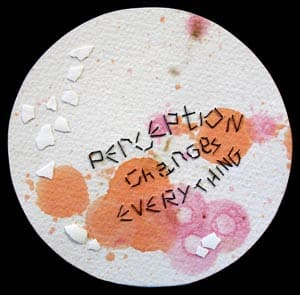by Carol Hanisch
Consciousness-raising was birthed as a mass-organizing tool for the liberation of women in 1968 when the country and the world were seething with freedom movements. The women who started the Women’s Liberation Movement, several of whom had experienced the Southern Civil Rights Movement firsthand, were convinced it would take a similar mass movement that went beyond lobbying for legal reforms (as NOW and some other groups were doing) to get to the roots of male supremacy and end women’s oppression.
Consciousness-raising was a way to use our own lives—our combined experiences—to understand concretely how we are oppressed and who was actually doing the oppressing. We regarded this knowledge as necessary for building such a movement.
Consciousness-raising as a deliberate program was sparked in a New York Radical Women meeting early in 1968 when Anne Forer remarked that she had only begun thinking about women as an oppressed group and that we needed to “raise our consciousness.” Anne went on to list a number of things women had to do to make themselves attractive to men, like not wearing our glasses, playing dumb, doing all kinds of painful things to our bodies, wearing uncomfortable clothing and shoes, going on diets—all because “people don’t find the real self of a woman attractive.”
This was picked up on by Kathie Sarachild, who had long been aware of women’s oppression having read Simone de Beauvoir’s The Second Sex as a teenager (after discovering it on her mother’s bookshelf).
“I realized I could learn a lot about how to understand and describe the particular oppression of women in ways that could reach other women in the way that this had just reached me,” Sarachild told the First National Conference of Stewardesses for Women Rights in a 1973 speech. “The whole group was as moved as I was, and we decided on the spot that what we needed—in the words Anne used—was to raise our consciousness some more.” (These beginnings are related by Sarachild in “Consciousness Raising: A Radical Weapon” in Feminist Revolution by Redstockings, 1975, 1978; available from Redstockings or from TruthTellers.)
In the autumn of 1968, Sarachild wrote up A Program for Feminist Consciousness-Raising to distribute at the first national women’s liberation conference at Lake Villa near Chicago over Thanksgiving weekend. It initially received a mixed reception, but before long, even groups that had previously disparaged consciousness-raising as “therapy” or “navel-gazing” began to take it up. Consciousness-Raising swept the country, with groups in every major city and many smaller towns.
Conclusions drawn in these groups were used to write such insightful and influential papers as Pat Mainardi’s The Politics of Housework,Irene Peslikis’ Resistances to Consciousness, Shulamith Firestone’s Women Rap about Sex, Anne Koedt’s The Myth of the Vaginal Orgasm, Ellen Willis’s Women and the Myth of Consumerism, and my article,The Personal Is Political—to mention only a very few. Such theory did not spring up in isolation. It came from months of weekly meetings where both strong feelings of unity from shared experience and lively, sometime heated, disagreements abounded.
Actions—large and small—also resulted from these discussions. For example, I got the idea for the 1968 Miss America Protest in a consciousness-raising group. Though that protest idea didn’t come to fruition until months later, sometimes action was immediate. After hearing testimony by a member whose boss wouldn’t pay what he owed her, one group went right down to the restaurant and threatened to set up a picket line if he didn’t pay. (He did.) Group action on a problem of an individual member was rare, but actions from the new consciousness were common.
One of the strengths of consciousness-raising as an organizing tool was that anyone could do it. You didn’t need an academic degree or other professional credentials or money to participate. Most meetings were held in someone’s living room or in some other free meeting space. Some groups were more successful than others, of course, because some had more knowledgeable leadership and more commitment. Some got tangled up in all kinds of rules that prevented a free-flowing debate. Others attempted to prevent any judgment on what was said or the drawing of conclusions from the testimonies, thus preventing group action on what was learned.
Many of these rules came from those who really only wanted a personal support group where they could “vent” about their lives with no intention of following it up with group analysis and action. The purpose of the group, in this view, was to be supportive, develop oneself and be able to feel a part of this important social movement, without ever having to “move.” Such groups were unlikely to come up with group positions that could be useful to the struggle.
This individualistic model seems to have been picked up by the self-identified “Third Wave”—if they even do consciousness-raising in ongoing groups. In an enlightening article, The Rhetorical Functions of Consciousness-Raising in the Third Wave, Stacey K. Sowards and Valerie Renegar write:
Third wave consciousness-raising rarely occurs in the organized, small group setting that was often the hallmark of consciousness-raising groups in the 1960s and 1970s…. One of the ways in which third wave consciousness-raising has adapted to the changing cultural climate is that it seeks to address larger and more public audiences. [Note from author: This is a curious statement given the voluminous amount of papers, journals, newspapers, anthologies and books produced by the so-called Second Wave!] …The expanding forms of third wave feminist consciousness-raising also create new avenues to an individual’s own consciousness-raising because a person may engage in self-dialogue and persuasion to a greater extent than if she were participating in a small group consciousness-raising session.
Even the few radical feminist groups who still do consciousness-raising rarely write up what they learn and take it to the public. Neither do they attempt to spread the Movement by organizing other consciousness-raising groups. This leaves the Movement without the broad, grassroots base that such groups once provided and that proved so important in demanding and winning big changes.
The Need to Put MOVE Back into the Movement
Organizing consciousness-raising groups today, admittedly, is not easy. Everyone is busier. Work and family demand much more of our time. Regular meetings take a high degree of commitment that is hard to motivate when activity and the belief that big changes are possible are at low ebb.
The ideologies of “post-feminism” and the misuse of “gender” have created other difficulties. In the 1960s, women’s liberation groups waged a battle and won the right for women to meet outside the earshot of the oppressor. Feminists today often limit their definition of oppressor to “sex roles” or “gender” and welcome men into their meetings, since they no longer consider men (and bosses) to be the beneficiaries of women’s oppression.
There is also fear and loathing of the face-to-face disagreement that consciousness-raising can generate in a search for the truth. One of the main reasons to analyze women’s condition through consciousness-raising is to unite women by exposing and exploring the commonality behind our various experiences and differing “opinions.” Disagreement that doesn’t relapse into “gotcha” name-calling and personal attack, but is done in the spirit of “getting to the root of it,” is not a sign of disunity but of collaboration.
Over the last 40 years the grassroots voices of the Movement have been replaced by those centered in the academy and other professionals writing on feminism for the “market” of the establishment media, rather than from and for the Movement. “Post-feminist” theory created in the academy means that male supremacy is rarely mentioned as a condition that still exists. Many women’s studies programs have turned into “gender studies,” expanding on what used to be called “sex roles” and ignoring the fact that women’s oppression is rooted in our special labor of reproducing humanity (bearing children) and a false division of labor in raising them—a division that benefits both men and the owning classes.
This centering of feminism in the academy has created other problems related to consciousness-raising. The serious, plain-spoken, passionate language that marked the early Women’s Liberation Movement’s success was a conscious attempt to speak in words born of grassroots insights, including the resulting passion and anger. The regression into a jargon that nicely conceals, confuses, and complicates both the problems and the solutions ensures that those who speak and write such aca-babble cannot be successfully challenged. The academy is not where women will find much usable history and theory about the Women’s Liberation Movement or insights into the latest manifestations of male supremacy.
Consciousness-raising groups of the grassroots are a badly needed antidote to a good deal of what is wrong with feminism today. It is true that much has changed—some wins and some losses–in the decades since it made its imprint on the world. Unfortunately the wins are often proving temporary or turn out to be mere chameleon-like changes in male supremacy’s outward appearance that protect it from discovery—or rediscovery. The world as a whole is changing rapidly as well. The current financial and social crisis can’t help but have an effect on women’s oppression and how we carry on the fight for liberation.
Young women tend to think that my generation either “discovered and did it all” or that “consciousness raising is old hat” and that face-to-face group discussion isn’t necessary to make further changes. Safely settling in behind computers and interacting on Facebook and other social networks—though certainly useful—has its limits.
Consciousness-raising is timeless and limitless. It can update women’s liberation thought and action in the hands of a new generation, but not if the goal is limited to self-expression. Building on the past and done for the right reason — of sustaining a movement for the liberation of women — it could even jumpstart a new era of radical change.
Carol Hanisch was a founding member of New York Radical Women in 1968 and has been agitating for the liberation of women ever since. She is probably best known for writing The Personal Is Political and for proposing the idea for—and writing a critique of—the 1968 Miss America Protest. She was also managing editor of the Redstockings book Feminist Revolution and editor of the journal Meeting Ground. She has also been active in civil rights, working class and environmental movements. Website:www.carolhanisch.org and email: [email protected].
Also see Sharing the Joy of Resistance Through Radio by Fran Luck in this edition of On The Issues Magazine.
See A Feminist’s U-Turn: A Torrid Tale of Disappointment and Discovery by Megan Carpentier in this edition of On The Issues Magazine.
See Thinking About Hollywood: Breaking the Entertainment Barrier by Jaye Austin Williams in this edition of On The Issues Magazine.
Visit The Café of On The Issues Magazine for new stories and updates.



